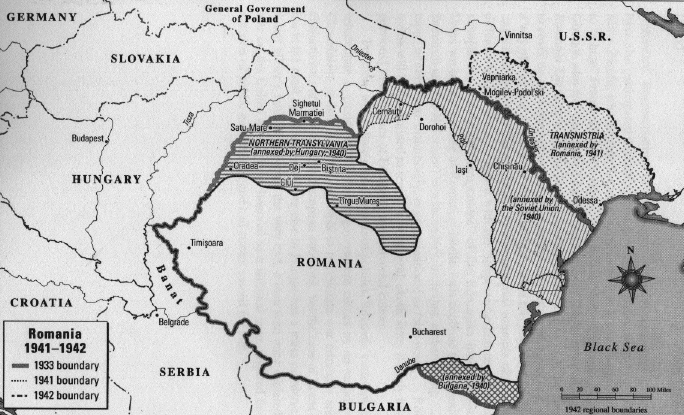

|
Transnistria
is an artificial geographic term,
created in World War II, referring
to the part of the Ukraine conquered
by German and Romanian troops in the
summer of 1941. Before the war this
area had a Jewish population of
300,000. Tens of thousands of them
were slaughtered by Einsatzgruppe D,
and by German and Romanian forces.
When Transnistria was occupied it
was used for the concentration of
the Jews of Bessarabia, Bukovina,
and northern Moldavia who were
expelled on the direct order of Ion
Antonescu.
|
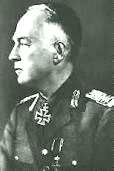
|
|
.Marshal
Ion Antonescu
|
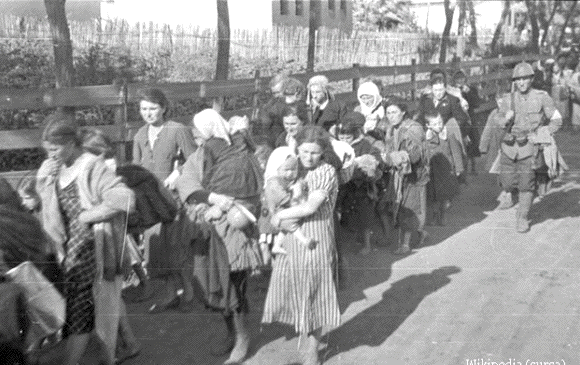 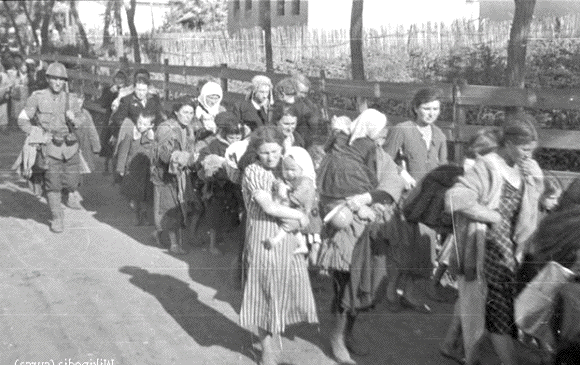
|
|
Romanian Jews from
Bukovina begin to be deported to
Transnistria on October 9, 1941.
|
|
Editor's Note:
- Since 2004, the
October 9 day has become Romania's National
Day Commemorating the Holocaust
after Romania has acknowledged,
after so many decades of denial, the
existence of the Holocaust within
its territories.
- In spite of that
territorial recognition, to this
very day, manny Romanians consider
their pro-Nazi genocidal dictator
Ion Antonescu to be a "patriot"
rather than a war mass-murder
criminal for which he was convicted
and executed.
|
The
deportations began on September 15, 1941, and
continued, until the fall of 1942. Most of the
Jews who survived the mass killings carried out in
Bessarabia and Bukovina were deported to
Transnistria by the end of 1941. Also deported to
Transnistria were political prisoners and Jews who
had evaded the existing regulations on forced
labor. The total number of deportees was
apparently 150,000, although German sources put
the figure at 185,000. On October 13, 1942, the
Romanians called a halt to the deportations to
Transnistria.
|
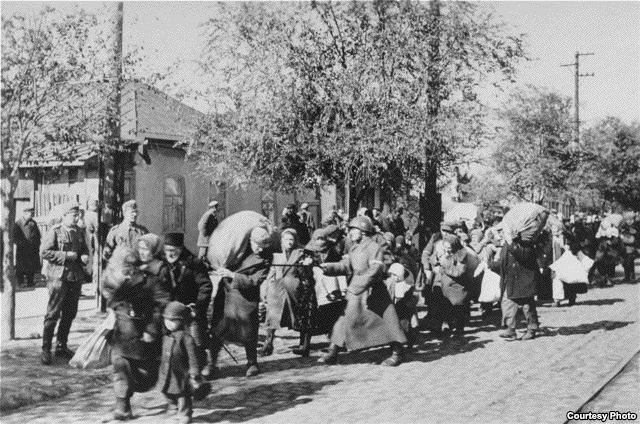
|
1941-1942 Deportation of
Romanian Jews to Transnistria
[United States National
Archives and Record Administration]
|
The
Murderous Acitivities of the Romanians
The
ghettos and camps in the region were in the
hands of the gendarmerie and the Romanian
administrative authorities. In late November
1941 most of the Jews from Bessarabia and
Bukovina were herded into ghettos and camps in
northern and central Transnistria. Following the
Antonescu - ordered slaughter of the Jews of
Odessa, the Romanian occupation authorities
deported the survivors to camps
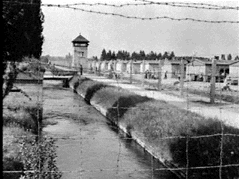
|
|
|
Bogdanovka (Romanian,
Bogdanovca), camp located on the Bug
River, in the village of Bogdanovka in
Transnistia. It was established in
October 1941 by the Romanian occupation
authorities. By December 1, 1941, over
54,000 Jews from Bessarabia and Odessa
were imprisoned in the camp. In
mid-December, typhus broke out in
Bogdanovka. At that point, the Romanians
and Germans decided to destroy the
entire camp population. The
extermination began on December 21.
Romanian soldiers and police, Ukrainian
police, and local civilians took part,
under the command of the local Ukrainian
police chief. Approximately 5,000 sick
and handicapped prisoners were locked
into two stables which were then burnt
down. The rest of the prisoners were
marched in groups of 300--400
to the river. They were forced to remove
their clothing and kneel. Then they were
shot or hit with hand grenades. The
killing continued for four days, during
which 30,000 Jews were murdered. The
killing was stopped temporarily on
Christmas Eve, while the remaining Jews
were left outside, freezing and waiting
to die. The massacre began again on
December 28; 11,000 Jews were killed by
December 31. Two hundred were kept alive
to burn the bodies, after which most of
them were either killed or died from
exposure.
[Source: Yad Vashem]
|
in
the Golta district: 54,000
to the Bogdanovka camp,
18,000 to the Akhmetchetka camp,
and 8,000 to the Domanevka camp.
In Bogdanovka all the
Jews were shot to death, with the Romanian
gendarmerie, the Ukrainian police, and
Sonderkommando R, made up of Volksdeutsche,
taking part. In January and February 1942,
12,000 Ukrainian Jews were murdered in the two
other camps. Another 28,000 Jews, mostly from
the Ukraine, were killed by the SS and German
police, with the help of local Germans in
southern Transnistria. By March 1943 no more
than 485 Ukrainian Jews were left in all of
southern Transnistria. A total of 185,000
Ukrainian Jews were murdered by Romanian and
German army units.
The
Romanians had no plans for the resettlement of
tens of thousands of deportees from Romania, and
their sole aim was to drive the Jews further
east and north. No provisions were made for the
most basic necessities. The winter of 1941 -
1942 was severe, with tens of thousands of
deportees perishing. The deported Romanian Jews
organized on their own and tried to establish
mutual aid. The situation improved as the winter
of 1942 - 1943 drew near, when the first
shipments of aid from the Jewish communities in
the Regat and southern Transylvania reached the
Jews in Transnistria.
Attempts
to Provide Aid to Jews in Transnistria
On
December 17, 1941, Wilhelm Filderman, obtained
Antonescu's consent for aid to be sent to
Transnistria; but the authorities placed all
sorts of obstacles in the way. Still, the aid
played an important role in helping at least
some to survive. The determined efforts made by
the Jewish organizations, together with the
second thoughts that the Romanian leaders were
having about their policy, paved the way for
representatives of the Comisia Autonoma de
Asistenta (Autonomous Committee for Assistance)
being permitted to visit the area. Toward the
end of 1943, aid for the deported Jews in
Transnistria was being sent there by the
American Jewish Joint Distribution Committee,
the rescue committee of the Jewish Agency in
Turkey, the World Jewish Congress, and the
Oeuvre De Secours aux Enfants (OSE). In February
1943 Pope Pius XII made a nominal contribution
to the aid effort. The Consiliul Evreesc (Jewish
Council) focused its struggle on the
repatriation of the deportees and on the release
of some of them to go to Palestine. Also in
April 1943, the council, with the help of the
Centrala Evreilor (Jewish Center), obtained
Antonescu's permission for the return to Romania
of 5,000 orphans and other Jews. The 5,000 were
not repatriated, owing to German opposition,
obstructions put in the way by the governor of
Transnistria, and the intervention of the mufti
of Jerusalem, Hajj Amin al - Husseini. Filderman
was expelled to Transnistria in May 1943, and
upon his return to Romania in August called on
the government to enable all the Jews to return
to Romania.
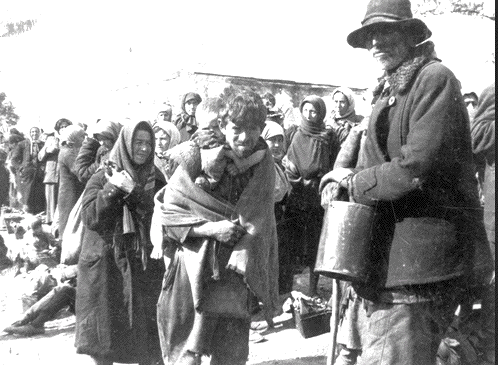
|
Ukrainian Jews near the
Dniester River being deported to
Transnistria in July 1941.
[Yad Vashem Archive.]
|
|
.
|
Finally,
with the Soviet army closing in on Transnistria,
permission was given for the Jews to come back,
and in mid - December 1943 the first group of
1,500 survivors returned. In March 1944 a group
of 1,841 orphans, out of 4,500 still alive at
the time, came back. On March 15, the Soviet
army launched the liberation of Transnistria. At
this point a Jewish committee from Bucharest
succeeded in repatriating another group,
consisting of 2,518 deportees. Of the Jews who
had been deported to Transnistria, a total of
145,000 to 150,000, some 90,000 perished there.
Many of the remaining survivors were allowed to
return to Romania in 1945 and 1946.

Courtesy
of: "Encyclopedia of the Holocaust"
©1990 Macmillan Publishing Company New York,
NY 10022, and
Yad Vashem: The Holocaust Martyrs' and Heroes'
Remembrance Authority

.
Special Selected Links:
Sarmas
(Photo) Memorial
Crossing
the Dniester
Inside The
Killing Fields of Transnistria
The List
of Concentration Camps and Ghettoes in
Transnistria
|
